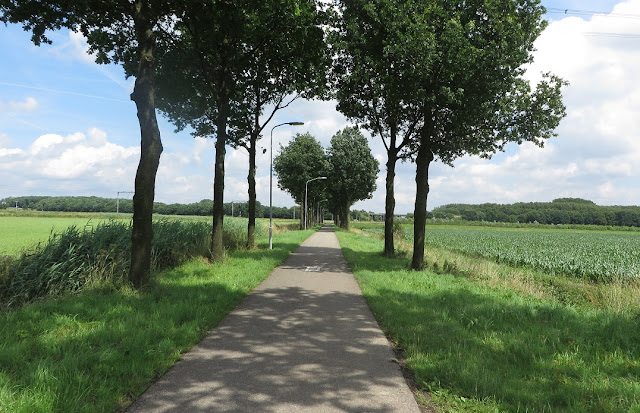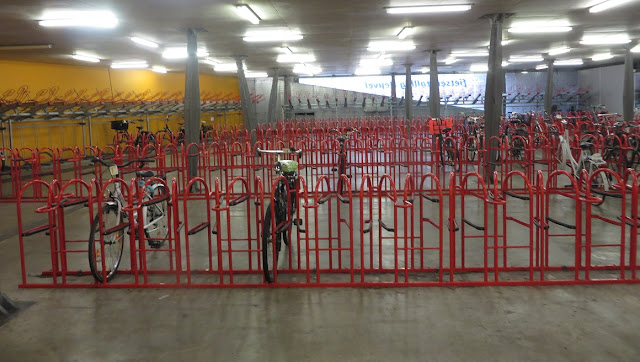However, from looking at the plans above it seems that no actual physical closure is to go in place at this junction, just "cycles only" painted on the entrance to both roads along with no entry signs. If so then this is a poor decision as it is bound to be ignored often by many motorists, just as Pitfield Street is.
Even when physical closures are put in place some drivers will still try to find a way around them
Although credit should go to Hackney Council for acting on this tweet and improving this junction to ensure cars can no longer get round the closures. However it shows that a physical closure of both roads is needed at the junctions in this consultation, perhaps something similar to Brill Place in Camden:@Hackneycyclist New filtering on CS1 going well. Found this guy driving along the pavement to get around it… pic.twitter.com/xQi3Qac0mD— James Davie (@jdavie) November 2, 2016
If this kind of closure were to be introduced on both roads then a tiger crossing could possibly be built across New North Road, allowing pedestrians and cyclists to cross the junction
 |
| A Tiger crossing on Richmond Road in Hackney, courtesy of the London cycling campaign |
New North Road itself is three lanes wide here and according to DFT traffic counts is used by around 20,000 motor vehicles per day, including over a thousand buses or lorries, therefore this road should be upgraded with segregated cycle tracks
Yet despite there being space available for cycle tracks here all that is planned for that middle section of the road to become a hatched area, leading to a right turn filter for cyclists:
This is absurd, surely cycle tracks along with a two stage right turn would be a better solution. When I lived in De Beauvoir Town I used to use New North Road ,most days and disliked having to use the right turn filter into Baring Street, the next junction along from here. It is unpleasant to have to "take the lane" in order to manoeuvre into a right turning filter lane on such a busy road and only a small section of Hackney residents are willing to do it.
On Eagle Wharf Road itself the segregated cycle lane that does exist is to be removed and the road made two way, all part of a long term plan to remove segregated cycle lanes from Hackneys streets. If the plans in this consultation go ahead then that will mean that following removal of segregated cycle tracks from Eastway, Goldsmiths' Row, Pitfield Street and now New North Road there would be virtually none remaining. Saying that, I think it would be an improvement if this section of New North Road was to be closed to through motor traffic and therefore access only for local residents, as only a handful of motor vehicles would need to use it per day so a segregated lane would not be needed. However I fear without physical blockage of the road then motor vehicle levels are unlikely to be that low
East of New North Road and Poole Street is also to be made two way. Again I find this road quite pleasant to cycle eastbound on at the minute due to the contraflow cycle lane (although it should ideally be on the other side of the car parking)
This actually makes it quite pleasant to cycle on and I hope measures are being taken to see what effect this closure has had on traffic in the area. If there is little effect on surrounding roads then maybe it could permanently become one way for motor traffic in order to enable protected cycle tracks for people cycling on this "cycle grid"
 |
| A road which is one way for motorists to enable a bi-directional cycle track in Eindhoven |
Perhaps this could then be extended onto Hoxton Street and beyond; the one way system for cars could even flip direction at junctions, acting as a "filter" for through motor traffic. This would also severely reduce the amount of motor traffic crossing CS1 at Britannia junction, reducing the many cycling casualties which occur here. A truly ambitious project that would enable anyone, of any age or ability, the chance to travel to school or go shopping locally by bike.
Elsewhere Murray Grove is to be made two way for all traffic with the council stating that "these measures will facilitate the flow of traffic including buses between Shepherdess Walk and New North Road in both directions". Presumably this is to keep the 394 along the same route east and west, rather than splitting the route, as happens now:
As a semi-regular user of the 394 this will make the journey quicker and avoid putting the buses down narrow residential streets so I agree with this proposal, I just wish this was in a separate consultation as this has nothing to do with "improving the area for cycling and walking along the Central London cycle grid".
The consultation is open until Wednesday 30th November. You can respond here.


















































